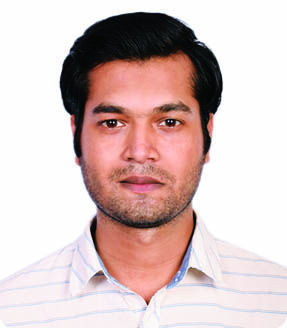Visit ‘Taka Museum’to learn about ancient to modern-day currencies

Money may not always buy happiness, but the display of coins and notes from ancient to recent times at the ‘Taka Jadughar’, a currency museum of Bangladesh Bank (BB), can often bring smile.
In addition, the preservation, aesthetic presentation and history of world currencies including Bangladesh, ancient Bengal and subcontinent in 93 showcases and on digital displays will make anyone wonder how we have reached the era of notes and digital currencies from early ages of ‘Exchanging Commodities’.
Located on the first and second floor of the Bangladesh Bank Training Academy at Mirpur-02 in the capital, the museum began its modernized journey on October 5, 2013 after being inaugurated by Speaker of the National Parliament Shirin Sharmin Chaudhury. It was from then made open to the public from Saturday to Wednesday without any entry fee.
Earlier on April 27, that year, Prime Minister Sheikh Hasina laid the foundation stone of the museum. However, ‘Taka Museum’ is an expanded and modern information-technology enriched version of the ‘Currency Museum’, established in 2009 in the main building of BB’s head office.
A large number of commemorative coins and notes issued by BB in memory of significant events, days and personalities are displayed here. Mentionable of these include Birth Centenary of the Father of the Nation Bangabandhu Sheikh Mujibur Rahman, Golden Jubilee of the independence of Bangladesh, 25th anniversary of Bangladesh Bank, Recognition of International Mother Language Day by UNESCO, Rabindranath Tagore's 150th Birth Anniversary and Rebel Poet Kazi Nazrul Islam's Poetry.
In addition, notes on the occasion of Football World Cup in Russia 2018 and Bangladesh ICC Cricket World Cup 2011 will certainly impress visitors.
“We’re working on collecting more souvenir notes and enriching the museum. Recently we have expanded our collection to the second floor,” told Curator (DGM) of the museum Achia Khanom Likhon to Bangladesh Post.
The coins on display in the museum include the oldest punch marked silver coins of Indian subcontinent from the 4th-5th century BC, Kushan Empire, Harikela, Delhi Sultans, Bengal, Mughals and the British rulers.
Above and beyond, some specimens of cowries used as coins in small transactions of Bengal from time immemorial to 19th century are also displayed here.
The arrival of Muslims in Bengal in the medieval era was the re-introduction of coin-based urban development and management as well as coin-centric economic activities in the region. It is to be noted that Sultan Mahmud of Ghazni named the first coin as ‘Tanka’. On the other hand, Sultan Iltutmish of Delhi named his gold and silver coins 'Tankah’. These names got its’ modern pronunciation as ‘Taka’ over the periods.
After the conquest of Bengal by the Mughals in 1576, the central currency of the rulers was introduced in Bengal. In addition to the coins of that period, contemporary Koch and Ahom (Assam) coins are on display in the Taka Museum.
In 1835, the first British currency was introduced in British India in imitation of the British currency. The first paper notes were also introduced in India during their ruling period. The continuous history of the evolution of currency and paper notes in post-British Pakistan and independent Bangladesh is on display as well.
It currently has paper, polymer, hybrid notes and coins from about 200 countries. A significant number of paper notes, coins and rare bank notes and checks of different extinct countries, such as Yugoslavia, are also on display. One of the attractions of the museum is the minting of coins from Japan, Germany and the Kremnica’s master dice.
“Every year we arrange various programmes on different national occasions and foreign delegates and visitors present us these foreign notes. Some others have been presented by prominent people while some others are collected by BB itself,” told Achia khatun to Bangladesh post when asked how the museum has gathered so much.
In the museum's exhibition gallery, the trend of economic evolution from ancient to modern times has flourished in Bengal, including the exchange of ancient goods, is depicted through the diorama.
Efforts have been made in the museum to make the best use of information technology to meet the needs of the time. Here, digital signage displays various information on video images and information of the coins displayed in the showcase are captured through digital kiosk.In addition, through the photo kiosk, visitors can print souvenir notes with their faces to commemorate the museum trip.
“Hearing of the visit to the museum, we’ve come here to learn about the mesmerizing history. It’s wonderful and we’re amazed at the vast collection. Now I’m happy to see an image of my face printed on a big note,” said a delighted visitor Md Naim Islam.
The first audio guide technology in Bangladesh has been applied in Taka Museum. With the help of this technology, visitors can learn about the museum and the coins on display without the help of a guide.
To give a full dimension to the beauty of the museum, a money tree has been placed on the entrance wall, which has been constructed in a steel structure with replicas of the coins and coins of ancient Bengal to the present day.
Also, the terracotta work painted on the wall on the right side of the entrance has added a different dimension to the museum’s growth. This terracotta mural depicts a series of transactions from ancient times to modern times.



